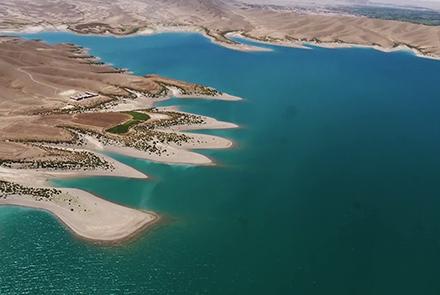Minister of water and energy Ali Ahmad Osmani on Monday said government has started work on implementing the Hirmand water treaty and management of territorial waters in the western zone of the country.
The minister said that work on the Kamal Khan Dam was underway, and that construction of the dam is the initial step towards the implementation of the Hirmand water treaty between Afghanistan and Iran.
Meanwhile, a number of economic commentators and experts have said that the establishment of the Kamal Khan Dam will lead to agricultural development in Afghanistan.
The minister said that the contract for the building of the dam will be signed within a few days and that the implementation of the project will help control water resources in the western part of the country.
“The construction of Kamal Khan Dam is essential in implementing Hirmand water treaty, but it is not enough, we also need to address other aspects of the treaty, because we know that the majority of water flows to neighboring countries,” said Osmani.
In addition to building the Kamal Khan Dam, government also plans to work on the installation of a substation at Dehrawood and to hold discussions with Iran about the scale of the catchment area.
Based on article 2 of Hirmand water treaty, Afghanistan is supposed to allow the flow of 26 cubic meters of water per second to Iran. But experts say that in view of the drop in water levels in Hirmand River over the past few years, Afghanistan must reassess the treaty with Iran.
“The level of water in Hirmand River has noticeably reduced, but Iran’s right to water is in place, therefore we need to reassess this right,” said economic analyst Sayed Masoud.
The water resources of Afghanistan are estimated to be around 70 billion cubic meters annually. However there are reports that almost 70 percent of this water flows to neighboring countries and Afghanistan is not able to control its water resources.
Despite Afghanistan being potentially rich in agriculture, the country is still not able to irrigate thousands of acres of land due to the shortage of water and resources.
Experts say that the management of water resources in Afghanistan is key to moving the country towards self-reliance.
According to the treaty that was concluded in 1973, Afghanistan is committed to share waters of the Hirmand River with Iran and supply it with 26 cubic meters of Hirmand water per second or 850 million cubic meters per annum.


